
This article was originally published on January 30, 2020 on The Restless Viking website.
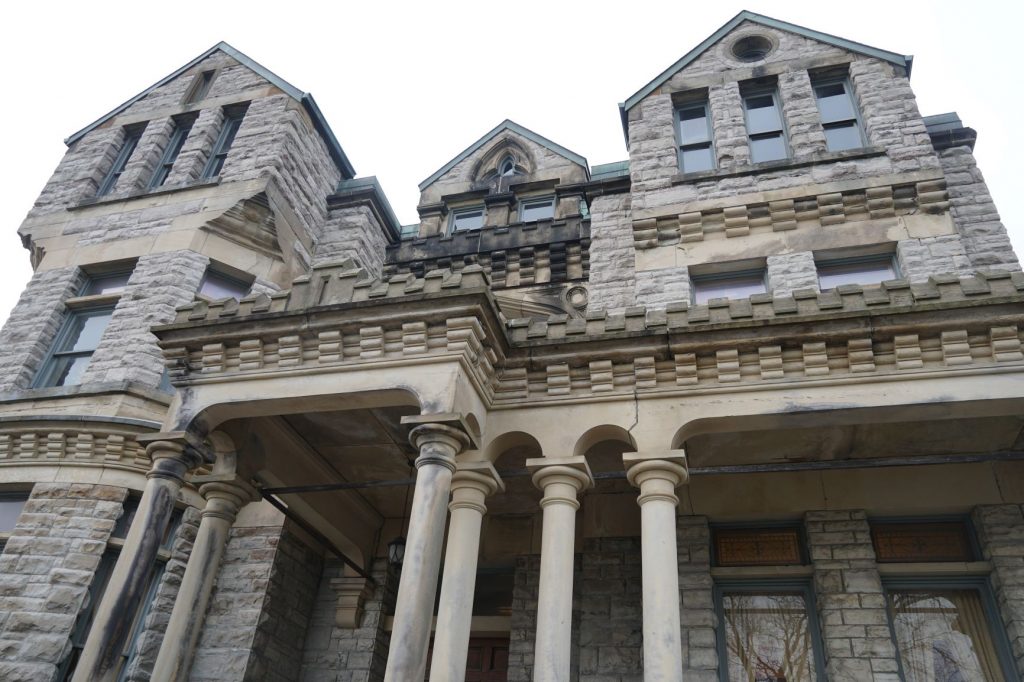
The Ohio State Reformatory
Constructed in 1896 Mansfield, Ohio
“Shawshank Redemption” and “Air Force One” were filmed here.
Walking up the stone stairway into the castle-looking prison a young family wearing pajama pants followed. Their four year old girl was leashed and their one year old was in mom’s arms. As we waited in line for our tickets to tour the Ohio State Reformatory I noticed the adults talking to each other and no one addressing the children. This always makes me sad. There are so many opportunities to teach young ones and exchange language representing our thoughts and feelings which creates secure connections. These kids were being ignored. An elderly female joined in the conversation. She was apparently part of their group, grandma, I assumed. The young girl stood patiently in line. Leashing children shows a lack of trust between the parents and the child. I don’t agree with this practice no matter the reason. The little one and I shared a smile.
As we approached the ticket booth, signs stated that tours were for “13 year olds and up. All children must stay with their parents at all times.” The grandma took the leash and secured the velcro bracelet to her own wrist. “Oh, good.” I thought. “Grandma will take the little darling away from this nightmarish place.” No one spoke to the child, so I couldn’t eavesdrop and find out their plan. The grandma and parents wandered around the museum rooms while waiting for their tour to begin. I never witnessed the three elders engage the children in wonderment, explanation or description. It really bothered me. Can you tell?
The four year old started to whine. It really echoed in the brick rooms with wooden floors. Her whining became louder. The adults continued in their daze of unawareness. Maybe they had a personal connection to this prison and were here to find closure, but bringing little children to a dilapidated lock up where death and injury were an everyday occurrence (which would have given me nightmares especially at an early age) seemed reckless. The 70 year old docent, Rose, was trying to tell us about the time capsule found inside the wall of the building. The young one screamed. “I’ve seen this before.” Rose shook her head. I nodded in agreement with Rose and thought that “kids need to feel connected in order to be successful. We need to feel like we belong.” The young family’s tour began and we didn’t see them again that day.
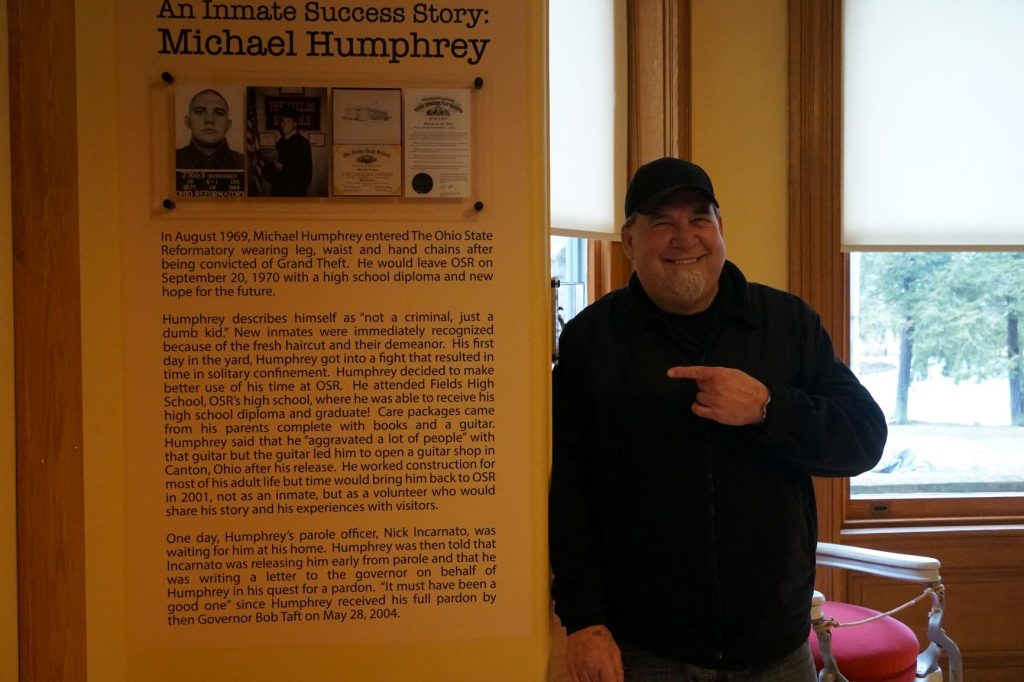
Michael Humphrey – Ex-inmate #77663 14 month sentence 1969-1970
He has given “Scared Straight” tours for 20 years to at risk youth.
Michael Humphrey sat near the description of his fourteen month sentence from 1969-1970 when he had been eighteen years old. He described his father’s abusive manner and shared that his dad drank a lot, so he moved into a house with a group of young men. This youthful troop stole cars. Michael was the only one home when the police came to investigate. Michael wouldn’t tell the judge his roommates’ names and Michael’s father didn’t sign paperwork or pay the fees deemed by the court. So Michael’s thirty day sentence turned into fourteen months. I thought about how Michael’s lack of connection with his father was a catalyst for his circumstance.
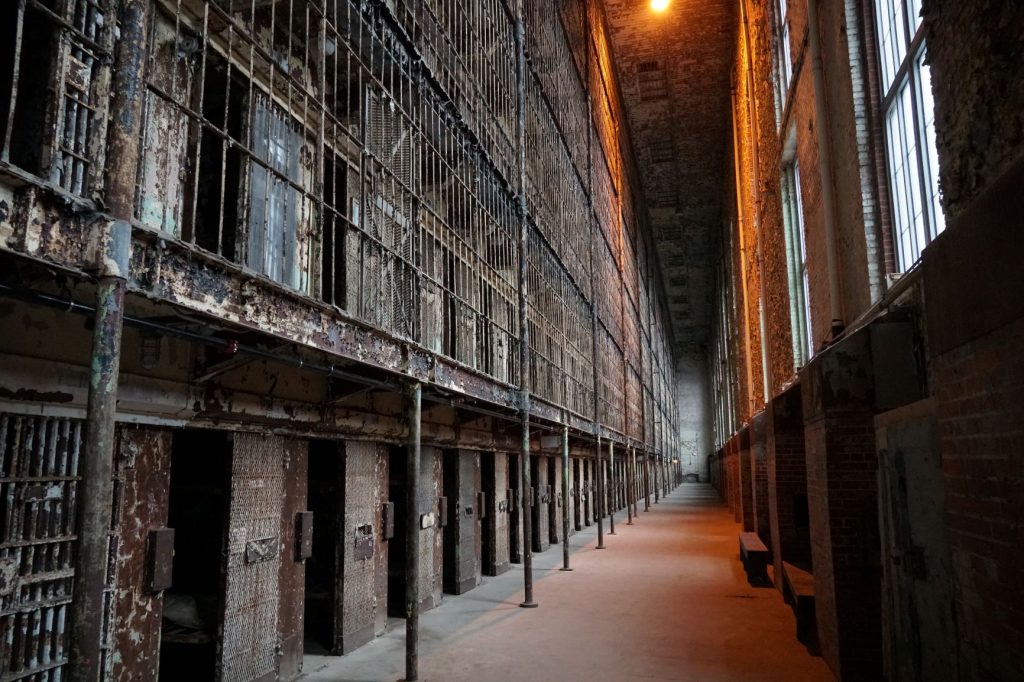
East Cell Block (added in the early 1900″s)
Six tiers with 100 cells on each level
Designed for one person occupancy – later up to 3 people were in each cell
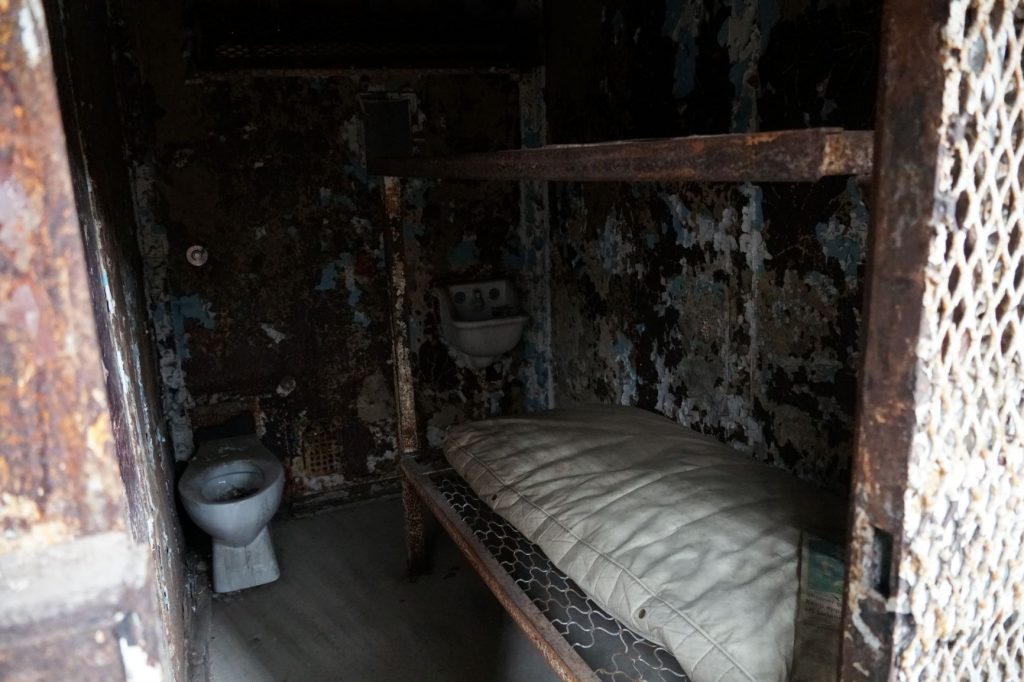
A cell in the East Block. Originally designed for one person.
This bunk provided space for two individuals.
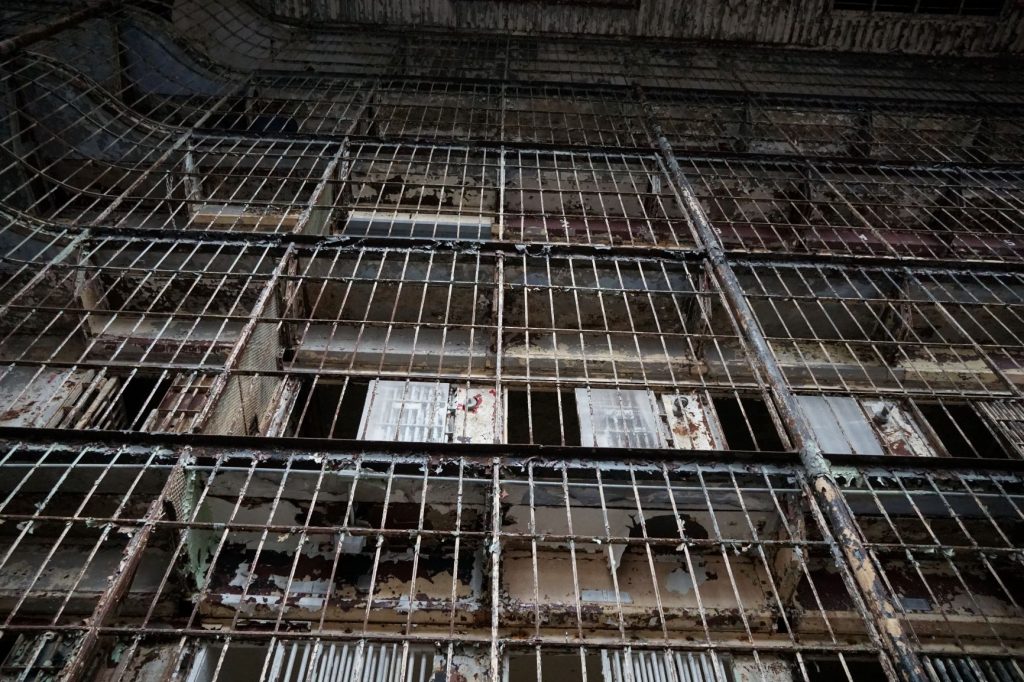
The East Block was nicknamed “Motel 6.” (pictured above)
The more hardened, violent prisoners were assigned in the East Block.
The West Block had three levels (300 inmates) was known at the “Hilton.”
The inmates had a self imposed 9:00 pm whisper rule.
Michael recalled the smell being “horrendous. The noise was deafening.” He had been placed in the East Block. That first day Michael had a fight in the yard and was put in solitary confinement for three days. He described sleeping naked without a mattress or blanket on the cement floor in the dank cell. He was given only bread and water for the first two days and a “green” baloney sandwich on the third. Michael decided to make this time count and he graduated as the valedictorian from the “Fields” prison high school. According to an article he used to carry a toothbrush with a razor blade melded into the handle for protection. “This place was very violent here. “
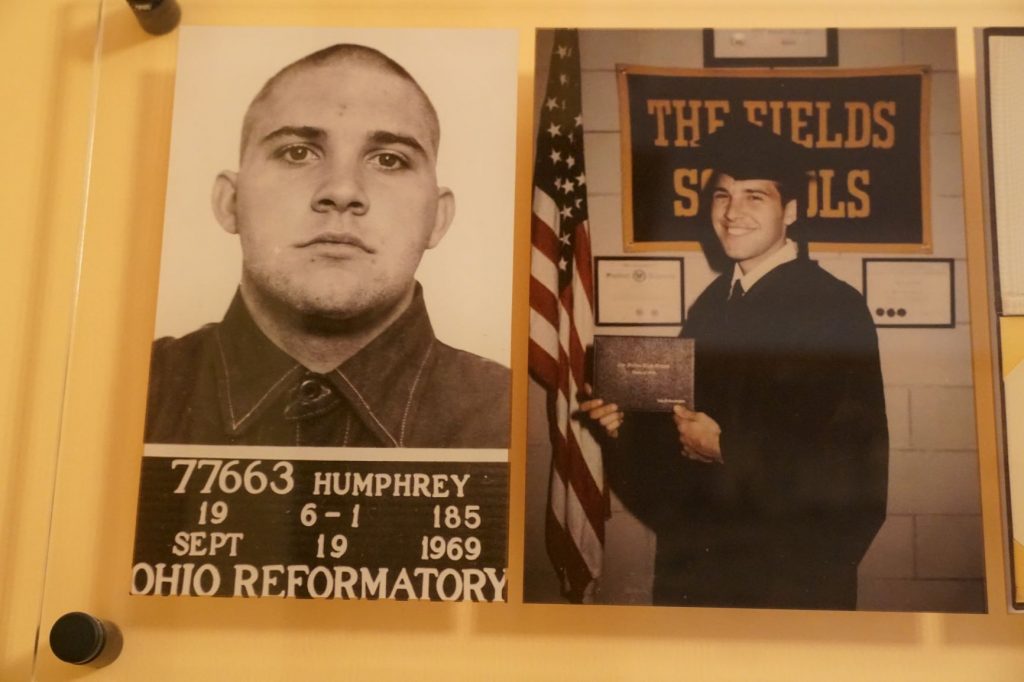
Michael Humphrey inmate #77663.
Michael Humphrey graduated as valedictorian from the prison high school, “Fields.”
He wanted to be a game warden or work at the post office, but with a felony conviction, he wasn’t allowed. So he moved to the Carolinas to build homes and start a guitar shop. In 2000 Michael returned to tour the building. We asked what made him want to come back. He said he had hated this place. He never answered directly, but shared a story about a disrespectful young boy he had mentored for a few hours one day. Michael gave the at-risk youth a t-shirt from the gift shop. (It was less offensive than the one the boy had been wearing.) As the pair toured the facility, he gave the boy straight talk about consequences and how they follow you all your life. Ten years later this young man and his mom came back to thank Michael. The boy had grown into a gentleman and was successful.
The connections Michael is able to make with at risk teens impacts these fragile kids into making better decisions. Maybe that’s why he came back. Or is it that he finds comfort within the walls as it had been the only systematic home he’d had? His high school graduation was the first real accomplishment he’d had in his life and it took place within these walls. As the character, Red (played by Morgan Freeman) said, “These walls are funny. First you hate ’em, then you get used to ’em. Enough time passes, you get so you depend on them.” (Shawshank Redemption, 1994) The movie was filmed at the Ohio State Reformatory. Another character, Brooks, had been released after being an inmate his whole adult life. He struggled with being “on the outside” and took his own life.
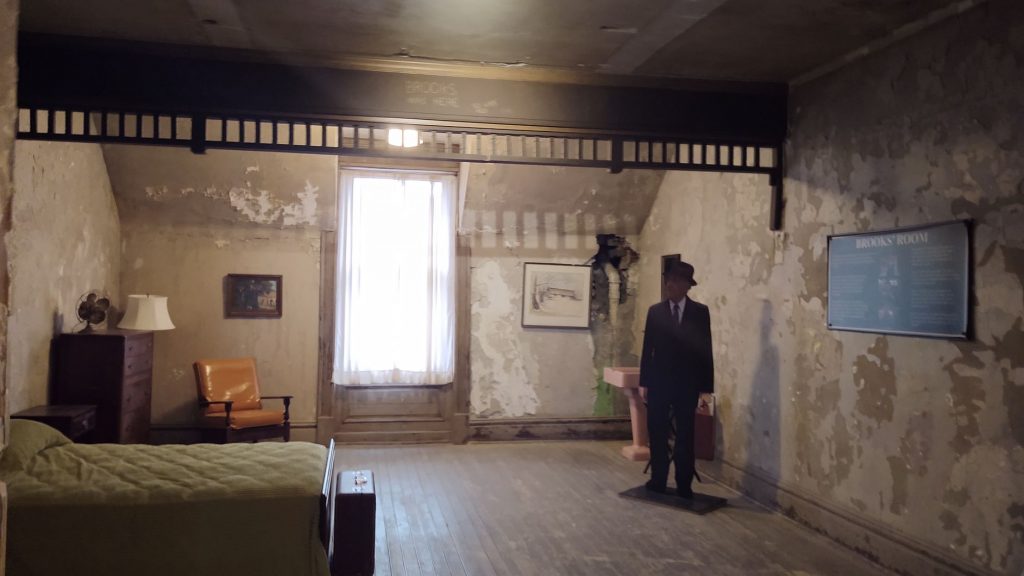
In the movie Brook’s hotel room was actually an old guard’s room in the reformatory.
Kyle, our tour guide, enthusiastically shared that his great grandfather worked at the reformatory until he was 76 years old. His mother worked on the third floor in a cell converted into an office. She was one of the last to leave before the closing in 1990. Kyle remembered coming here with his parents and getting a hair cut at the barber shop. He has tangible connections to this place and takes pride in enlightening tour groups about the history and happenings of the facility and how it’s changed over the years.
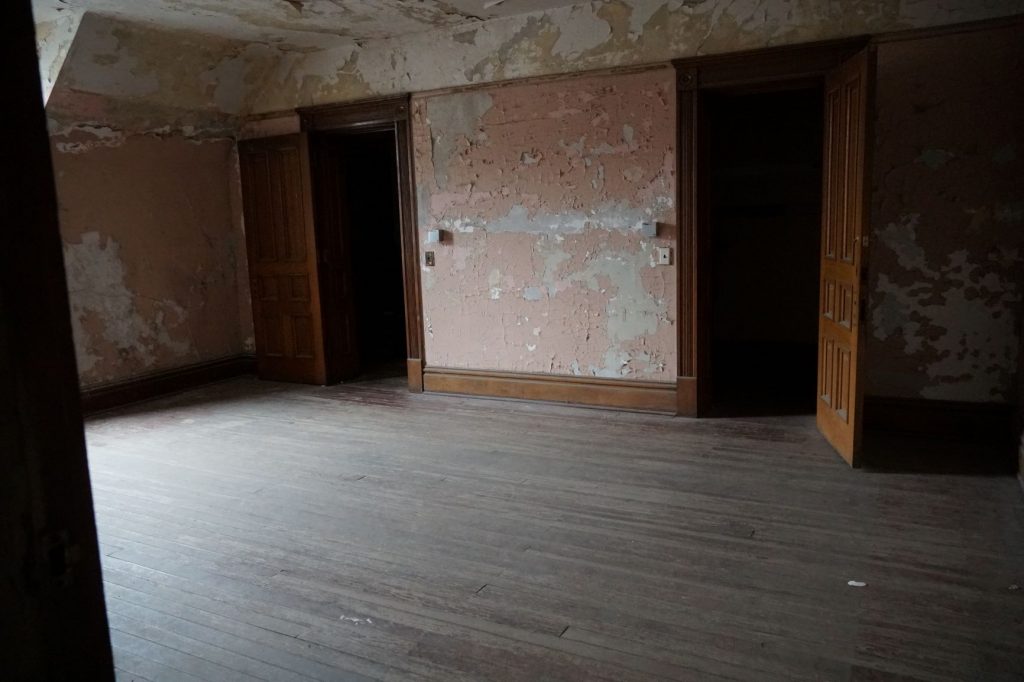
Unmarried guard’s room inside the prison.
Our tour guide’s great grandfather’s room.
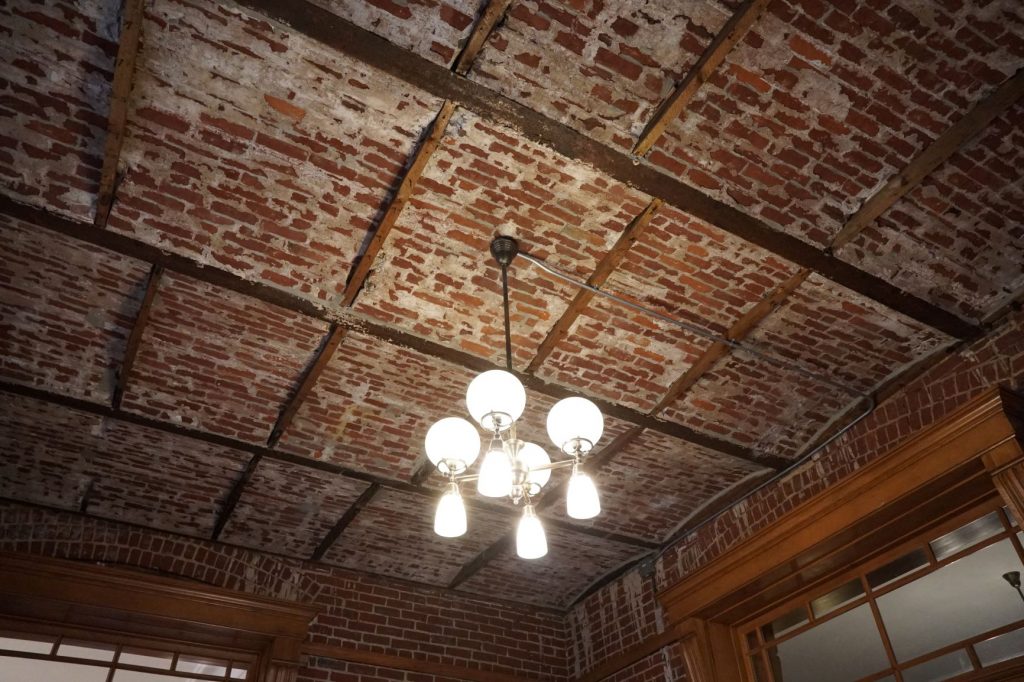
Levi Scofield, the architect, used Victorian Gothic, Richardsonian Romanesque and Queen Anne styles to complete the reformatory within a ten year span.
Joe, whose father was a guard, shared the structure’s history. As a young boy he’d come here for haircuts, too.
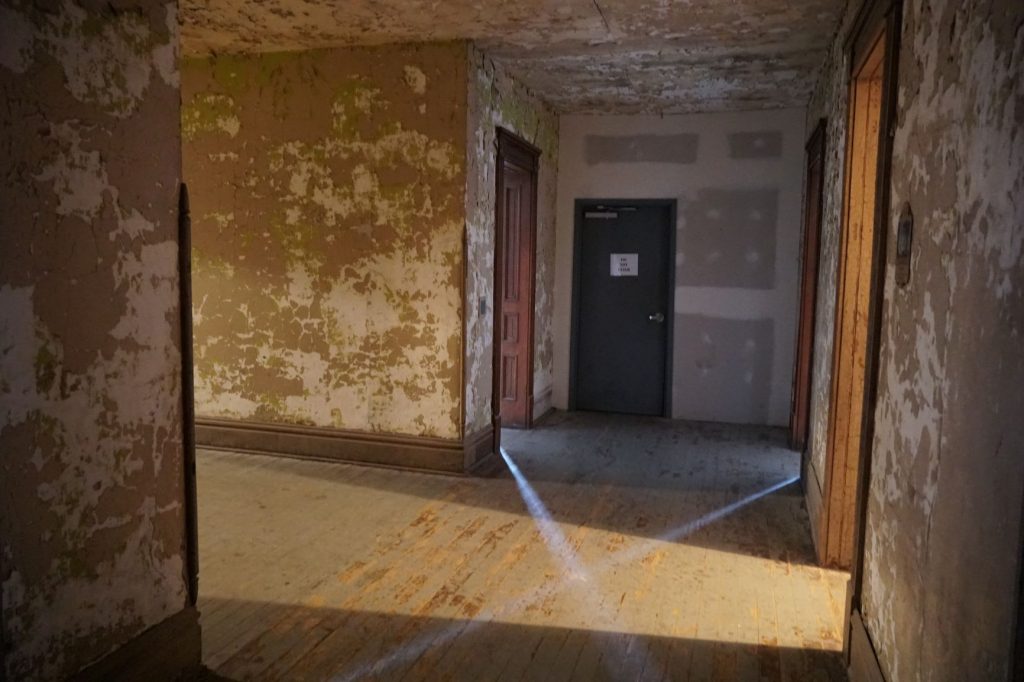
Levi Scofield designed the building symmetrically.
The intersecting light beams demonstrate how perfectly he had planned the structure.
Paranormal enthusiasts believe that standing on the intersecting light beams is a portal.
The reformatory was built on civil war training grounds. In 1896 Levi Scofield designed the structure using Victorian Gothic, Richardsonian Romanesque and Queen Anne styles to look like a symmetric castle. People used to picnic on the lawn and use rowboats in the pond. It reminds me of a European boarding school. The “reform” of these young, non-violent offenders consisted of religion, education and trade. The inmates had a connection to society. There were factories on the grounds producing shoes, clothing, furniture, a power plant and constructing the east block. Schooling and church were part of the regular routine. The inmates were only in their cells at night. With this connection there was an 85% success rate.
In the 1920’s the prohibition amendment was passed, which made it illegal to distill, sell or buy alcohol. The one man cells were being doubled up. Then the 1930’s stock market crash happened. People were caught stealing food (to survive) and were brought to the reformatory. The budget was being stretched and the cells were more over crowded than ever. They put beds in the attic. Men were offered release, but they didn’t want to go.
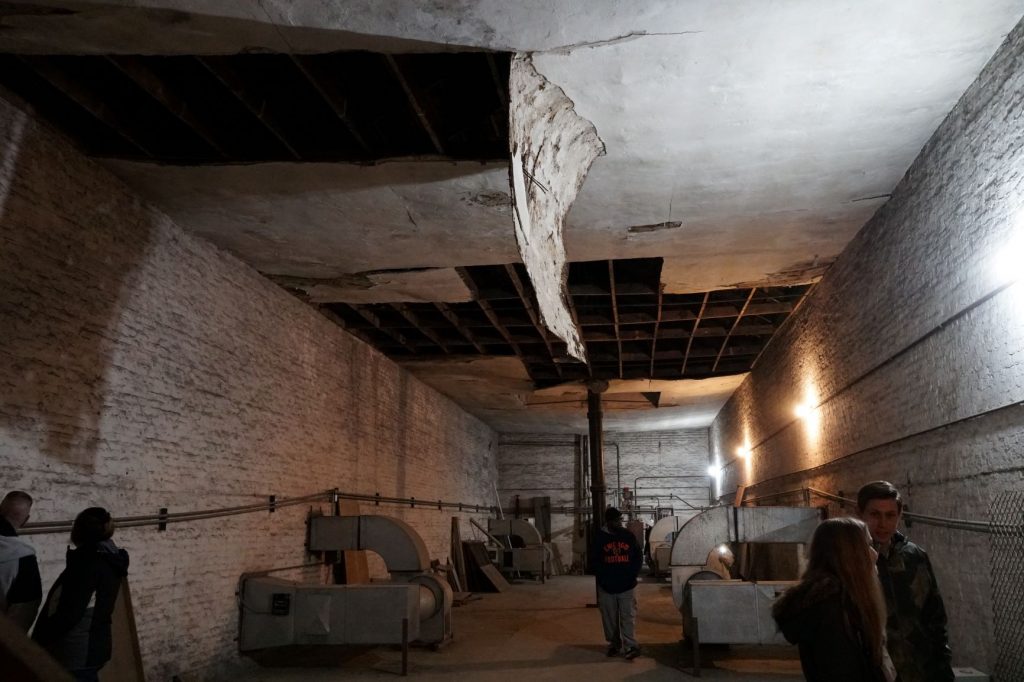
The attic housed the overflow of prisoners in the 1930’s.
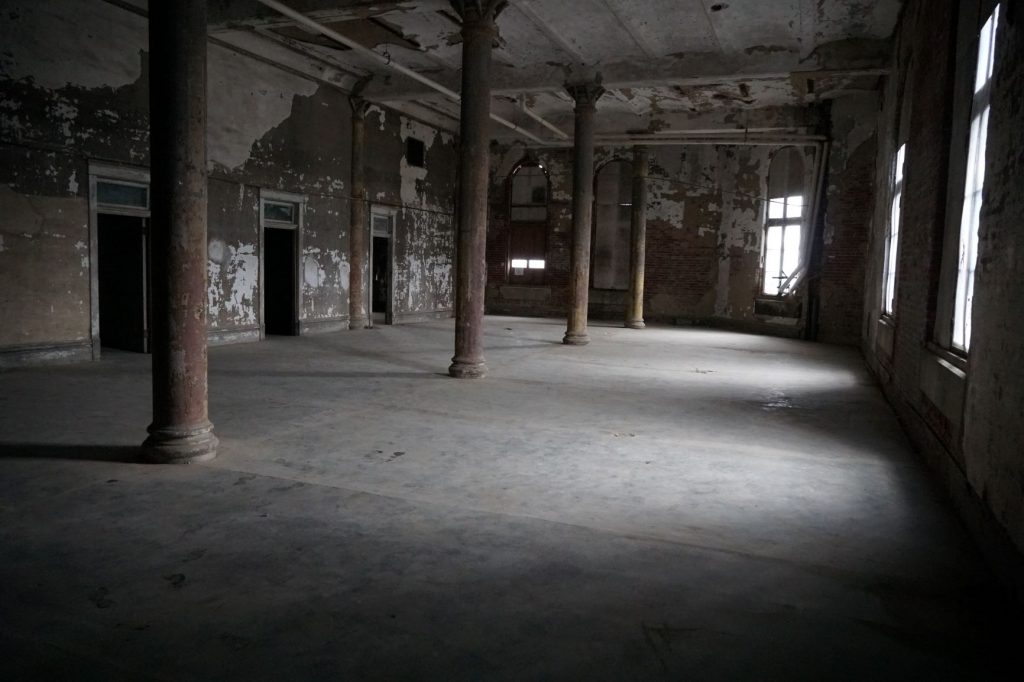
The hospital was built inside the existing building in 1951 due to a T.B. outbreak.
On the floor you can see where walls had been constructed.
Later, this room was used for training.
In the 1960’s the state pulled their financial support and the “reformatory” became a maximum security prison. Instead of having jobs that produced items for society or even the prison, many inmates were left in their cells for most of the day. With two or three people per cell, the atmosphere was was ready to rupture.
In 1980 inmates successfully sued the state for better conditions. A new modern facility was being constructed. By 1990, the Ohio State Reformatory was closed. A group of local activists rallied to purchase this historical building, purchasing it from the state at an auction for one dollar.
Several movies and music videos as well as paranormal shows have been filmed at this location: “Harry and Walter Go To Hollywood,” “Tango and Cash,” “Escape Plan: The Extractors,” “The Shawshank Redemption” and “Air Force One.”
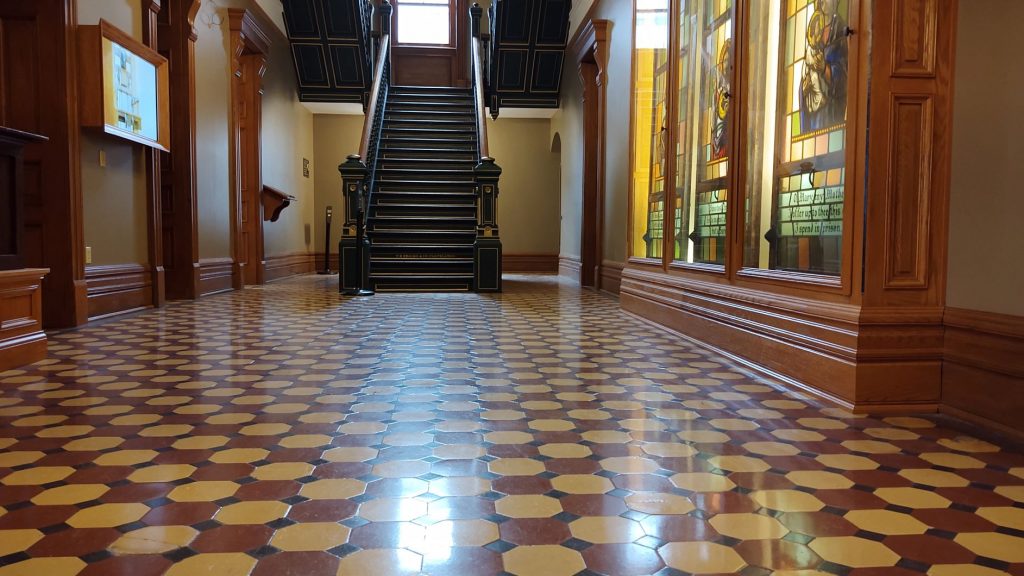
The entrance to the prison. The tiles are original.
The Portuguese manufacturer is still in business and will provide new tiles if needed.
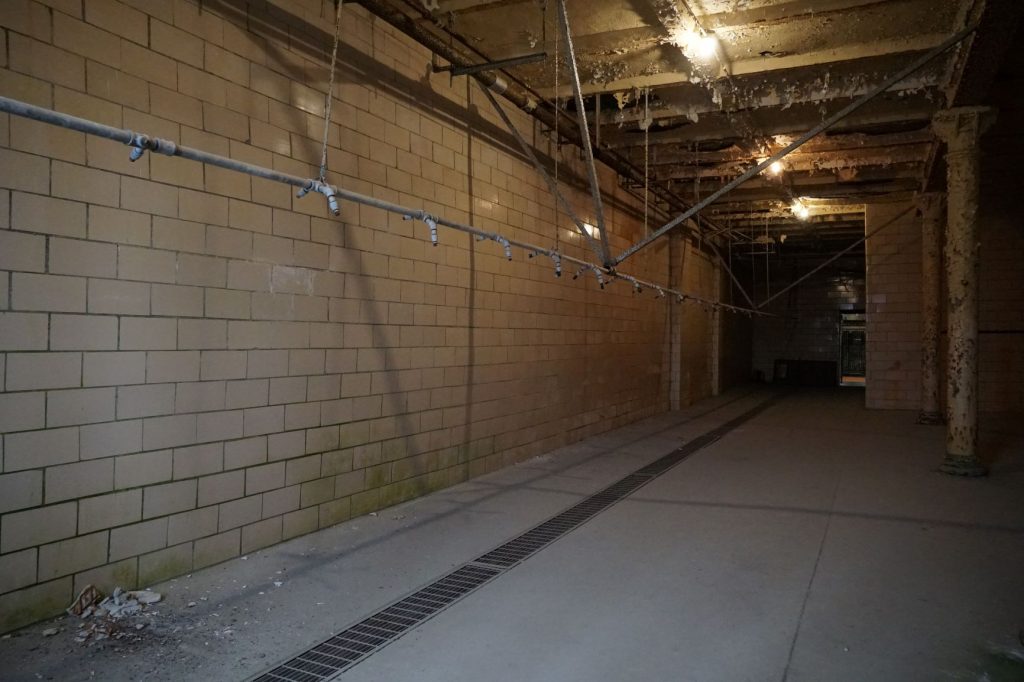
The Shower Room
Prisoners got a shower on Saturdays.
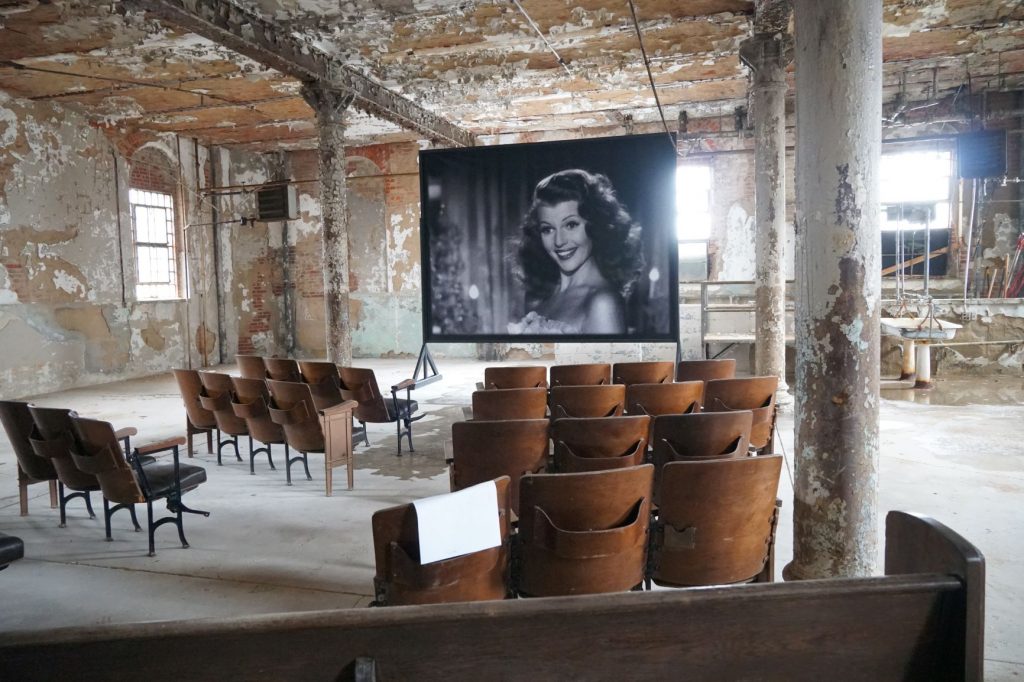
“Shawshank Redemption” watching movie scene
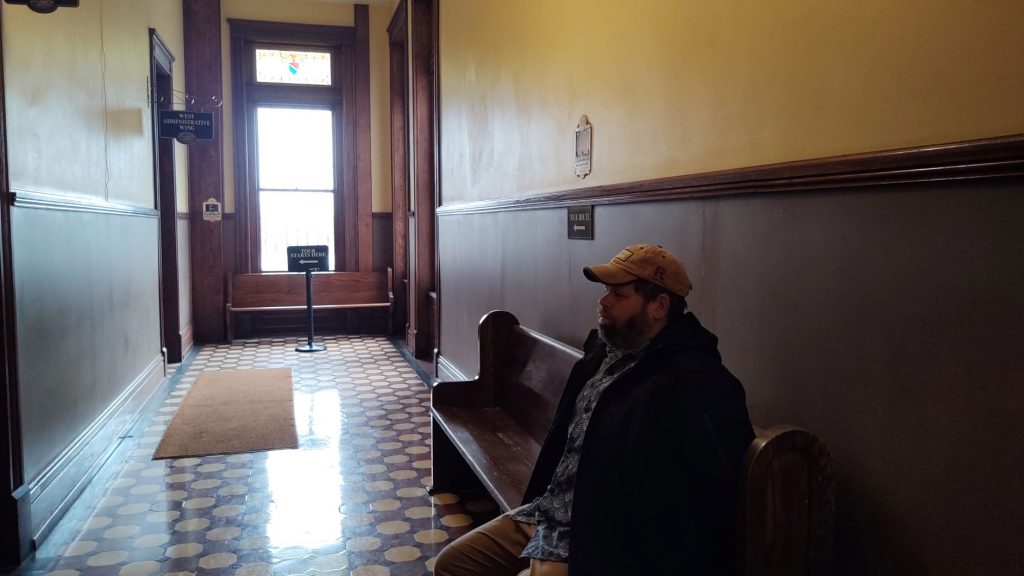
Chuck requested a parole hearing to see if 24 years of marriage was a long enough sentence.
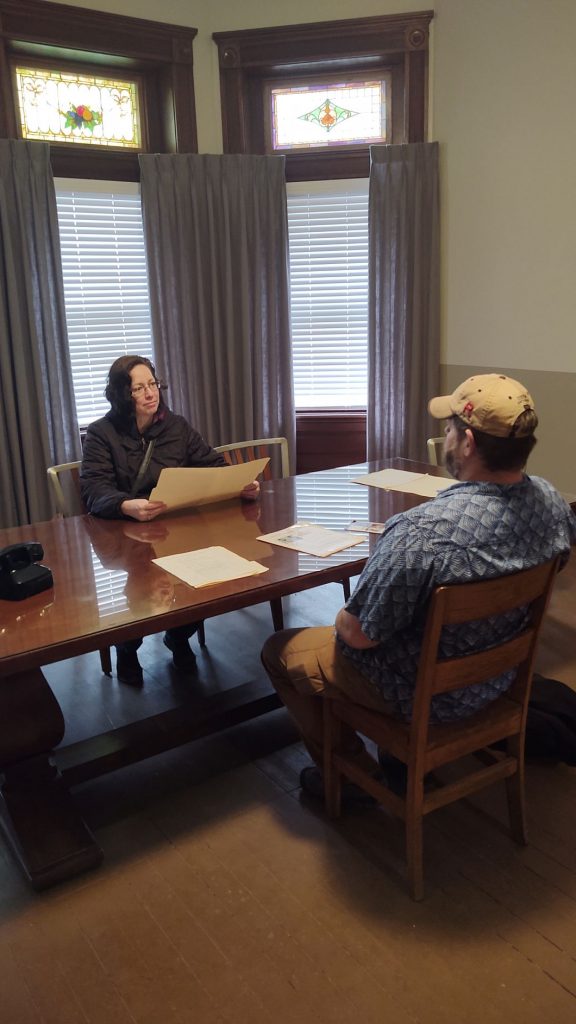
Chuck’s request was DENIED.
I enjoy our time traveling together and looking behind the curtain of life with him.
Connections provide the passport to enjoying life. Relationships and sharing memories bring fulfillment. Listening to others and learning from their experiences builds bridges through history giving us a centered existence. Chuck and I prefer to look behind the curtain of life and build connections as we travel. You can find connections at the Ohio State Reformatory. . . and you can find the consequences from a lack of connection.


Leave a Reply